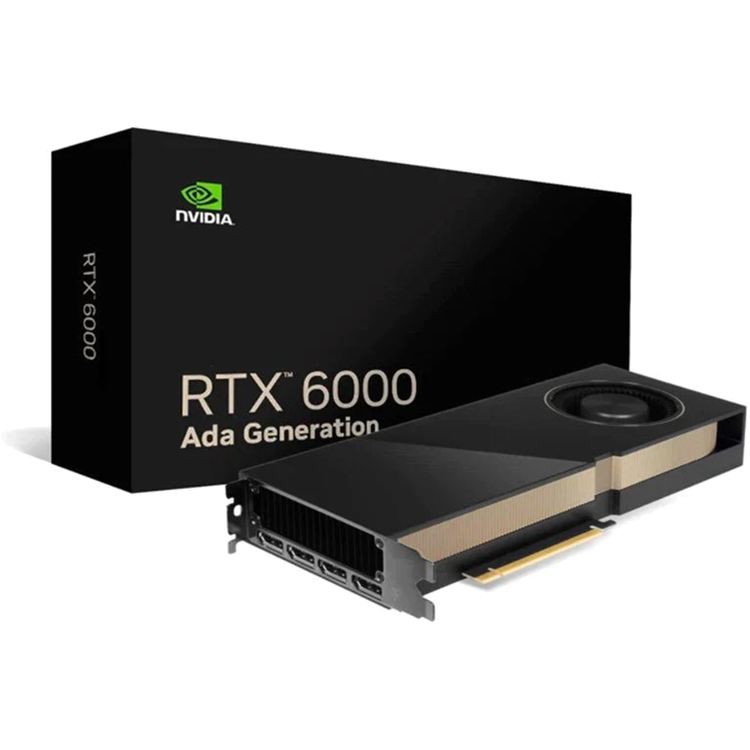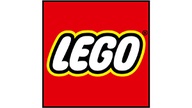
NVIDIA Server NVIDIA's products present a range of professional graphics cards designed for both rackmount
servers and powerful workstations. These are very high quality graphic products with large memory and a special set of drivers that are adapted to work in CAD and other professional applications as well as remote collaboration, virtual desktop, 3D visualization and rendering, but also for machine learning. Compared to desktop graphics cards, they are often also optimized for lower consumption. - Theoretical performance 91.06 TFLOPS- Graphics Engine Ada Lovelace Graphics memory VRAM, these days primarily of GDDR type, is a synchronous memory, similar to standard RAM. However, in the case of graphic memory, memory chips with faster throughput and multiple data transfer rates are concerned. The result is a much faster buffering of data that the graphics card or coprocessor calculates and passes to the processor. - Memory size 48- Memory type GDDR6 CUDA Technology Users of professional applications can benefit from CUDA graphics stream processors thanks to CUDA architecture. Thanks to this, the raw power of the graphics card can be used for specific calculations, which can accelerate the work manifold compared to a classic processor, which is significantly limited by a lower amount of cores. - Stream processors 18176- Number of tensor cores 568 Active The active type of cooling is widespread mainly due to the reliable method of lowering temperatures. It is cooling by air flow, most often consisting of one or more fans and its goal is to help create a vacuum inside the case thereby significantly improving the air flow that takes heat away from the graphics card out of the case. Active cooling of graphics cards is divided into axial cooling, common for traditional gaming graphics cards and radial cooling, which uses longitudinal airflow. This type of cooling is used, for example, by TURBO version of graphics cards. PCI Express PCI Express is an interface that usually takes the form of an expansion slot to ensure the modularity of the entire system, whether it is GPU, network cards, controllers, M.2 drives or other expansion cards. It is true that the newer the generation and wider the interface, the higher the performance and throughput. Most modern graphics cards use 16 lanes to connect with the processor. Currently, the most up-to-date generation is PCI Express generation 4.0 with a speed of 2 Gb/s per lane. - BUS PCIe 4.0 x16
- Product line
- Quadro
- Number of stream processors
- 18176
- Power consumption (W)
- 300
- Architecture
- Ada Lovelace
- Monitor output
- DisplayPort 4x
- Interface
- PCI-E 4.0 16x
- Gigabytes of memory
- 48
- Cooling type
- Active
- Memory type
- GDDR6
- Slot count
- 2
- Profile
- FH
As an international traveller you are entitled to bring a certain amount/value of goods that are free of Customs duty and exempt Goods and Services tax (GST) into New Zealand. This is called your duty free allowance and personal goods concession. It is important to review these for any purchases you make on The Mall.
Your duty free allowance entitles you to bring into New Zealand the following quantities of alcohol products free of customs duty and GST provided you are over 17 years of age. You do need to be 18 years or over to purchase.
- Up to six bottles (4.5 litres) of wine, champagne, port or sherry or
- Up to twelve cans (4.5 litres) of beer
- And three bottles (or other containers) each containing not more than 1125ml of spirits, liqueur, or other spirituous beverages
Goods other than alcohol and tobacco, whether purchased overseas or purchased duty free in New Zealand, that have a combined total value not exceeding NZ$700 may also be brought as part of your personal goods concession.
When travelling overseas there are legal limits on the amount of duty free alcohol and other goods you can take with you. These amounts will vary depending on the country you are flying into. We always recommend you check the latest limits and exemptions.
Your order can be picked up at an Auckland Airport Collection Point. There is one in departures and one at arrivals in the international terminal. Alternatively, if you are arriving between 11pm and 6am you will be able to collect your order from our lockers. See map
Please bring your order confirmation email and your passport. If you are collecting from lockers you will have been sent an email with your access code, be sure to have this on you in order to collect your order.
If you’re departing Auckland Airport, we recommend that you come to the Auckland Airport Collection Point at least 60 minutes before your flight. If you miss your pickup time or your flight details have changed please let us know as soon as possible.
When you collect your order you will have the opportunity to inspect the items and sign for them.
If you need to return an item, our Collection Point team are there to help you. If you are collecting after hours please return the item to your locker and our team will be in touch as soon as possible. You may also like to view our Returns & refunds which provides information on how this works and outlines the individual retailer's returns and refunds policies.
After Hours Collections
If your order needs to be collected after the Auckland Airport Collection Point desk is closed, your order will be placed in the lockers next to the desk. All the details you will need to collect your order will be provided in your Order Confirmation and Ready to Collect Email.










